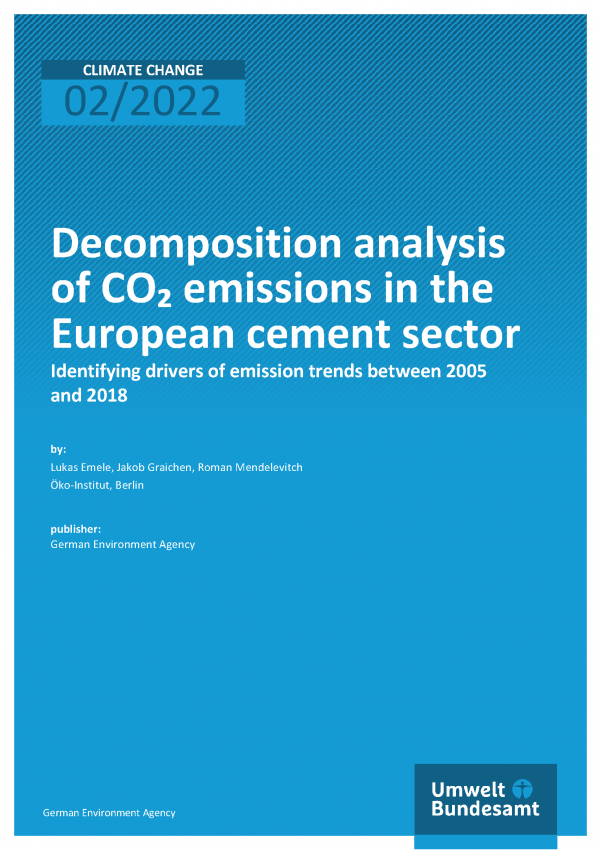Based on a methodological approach developed by Branger und Quirion (2015), the authors analyse the drivers governing the development of CO2 emissions from cement production from 2005 to 2018 for the EU28 as a whole and selected EU countries using the logarithmic mean Divisia index (LMDI) decomposition method. At the EU28 level, CO2 emissions declined from 150 MtCO2 in 2005 to 120 MtCO2 in 2018. We find that effects on cement clinker demand govern the development of CO2 emissions in the EU cement sector. Spain and Italy, among the EU countries most severely affected by the economic crisis of 2008/09 and the European debt crisis in 2011/12, are the major contributors to reductions in CO2 emissions. The main drivers behind the observed decline are construction activity and further activity effects. While the first one is arguably not directly affected by CO2 pricing, the latter needs to be understood in more detail to allow for clear conclusions.

Climate | Energy
Decomposition analysis of CO₂ emissions in the European cement sector
Identifying drivers of emission trends between 2005 and 2018
Series
Climate Change | 02/2022
Number of pages
43
Year of publication
Author(s)
Lukas Emele, Jakob Graichen, Roman Mendelevitch
Language
English
Project No. (FKZ)
3719 42 505 0
Publisher
Umweltbundesamt
Additional information
PDF is accessible
File size
1026 KB
Price
0,00 €
Print version
not available
rated as helpful
161

